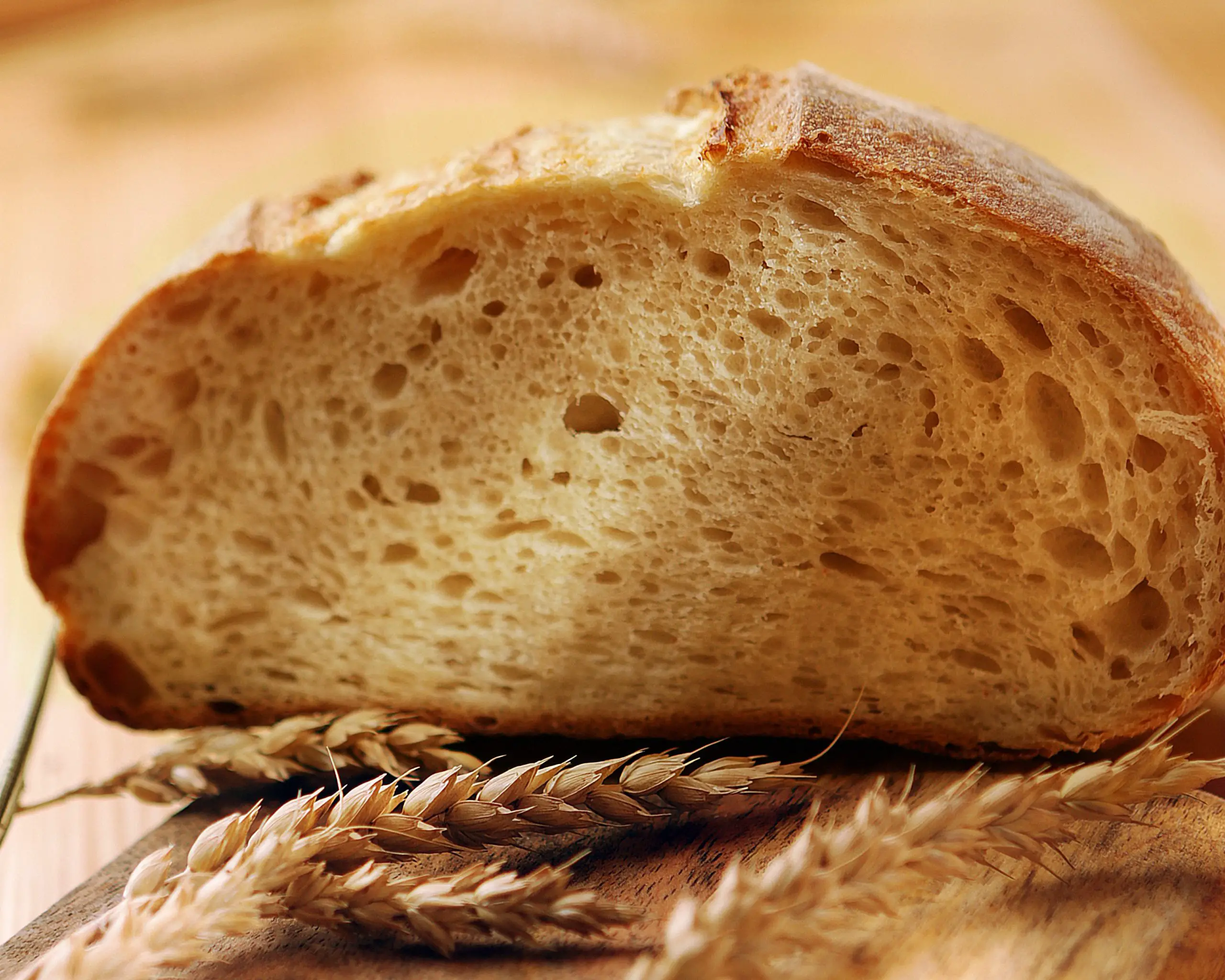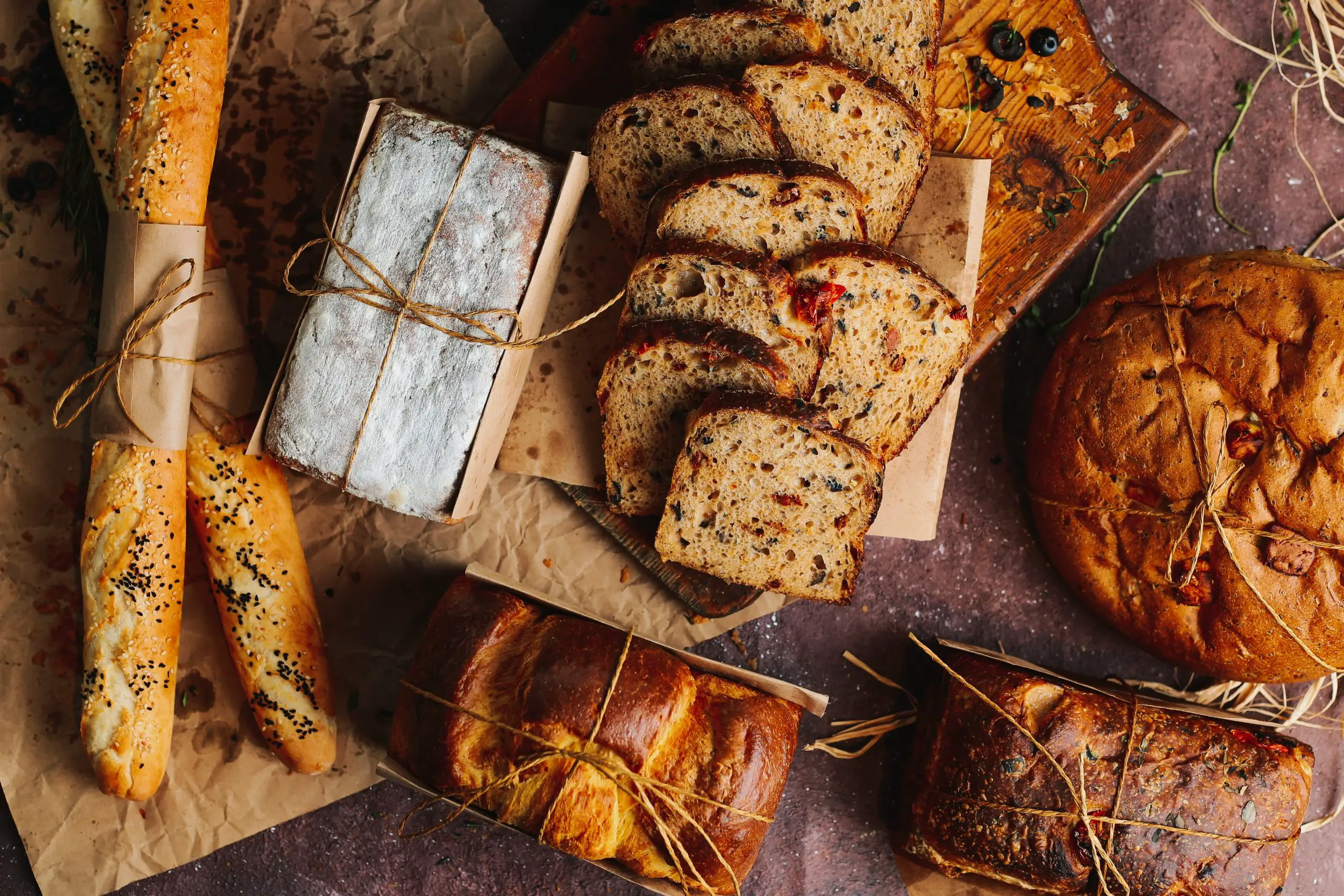Good fresh-baked bread storage is important and can make your life much easier. Whether you have sourdough or other types of fresh bread, knowing how to store it is essential. Freshly baked bread should be held in a cool, dry location, away from excessive heat, moisture, and air sources. All of them—paper, plastic bags, and bread boxes—are effective. This is how to prevent mold from growing on fresh bread. This article will guide you on how to store freshly baked bread and other important information about bread. So let’s start!

Freshly Baked Bread: What is it?
Any store-bought or homemade bread freshly cooked by a baker is considered such. Although it will vary depending on the type of bread, doughy items should be warm after the baking process and typically have a crusty exterior and a yeasty inside.
The bread recipe will determine how hard or soft you like your bread; for example, you might enjoy soft French toast yet want your croutons to be crunchy. Whatever the case, freshly baked bread shouldn’t be crumbly or old. In contrast to buns and sandwich bread, which should be softer all over, a fresh baguette should have a crispy surface and a doughy inside.
How to Store Fresh Baked Bread?
You probably already have items in your kitchen that you may use to store your baguettes, boules, and bread without preservatives. Find out how to keep freshly baked bread most conveniently. It must be kept fresh if you intend to utilize bread for a prolonged time. Consider these easy suggestions for long-term storage:
Don’t Refrigerate:
Bread’s shelf life cannot be extended by refrigeration; if anything, refrigeration shortens the shelf life. This is because the moisture in your bread will evaporate as a result of your refrigerator. The interior of the bread will thus become stale, dry, and difficult to chew. As an alternative, keep fresh bread in the freezer.
Bread in the Freezer:
Bread should be frozen for the longest possible storage. Whole loaves or individual slices can be kept in freezer bags for up to two months. In contrast to your refrigerator, your freezer will maintain all the moisture inside the bread. It will keep the same crunchy crust and soft interior as when it was first placed in the freezer when you defrost and reheat it, whether in a Dutch oven, toaster, or something else.
Cut the Bread only as Needed:
The exposed interior releases moisture when you cut a loaf of bread open. You can store bread for longer if you leave the entire loaf whole until you’re ready to serve individual slices. After cutting the loaf open, store it in an airtight or nearly airtight container to create the impression that the crust still seals the bread’s interior.
Bring the Sliced Edges Together:
Even while it could be preferable to retain an entire loaf intact for storage, it could be more feasible. Try cutting your bread down the middle instead of the ends as you place it on the cutting board. Once you’ve cut what you need from the middle, you can press the sliced bread’s two sides together. You’ll be able to preserve more moisture inside the bread if you do this.
Make Use of Stale Bread:
Sometimes it’s impossible to prevent the bread from going bad; in these situations, you can use the leftovers. You may use your stale bread in various ways, but breadcrumbs, croutons, and stuffing are common choices.
Take a Bread Box:
Loaves can avoid drying up too quickly by being placed in a bread box. Between securely wrapping bread and storing it outside at room temperature, bread boxes represent a middle ground. While they admit some air in, they provide a dry, semi-sealed environment to keep bread fresh.
A ceramic bread box provides the best airflow: Not too much, but enough to prevent your bread from drying. Do not worry if you need more space or like to purchase one. Placing your bread cut-side down on a wooden board may prevent the exposed crumb from drying up in the most basic way possible.
Bread in a Wrapper:
If you need to be as safe as possible, wrap the bread in plastic. Bread can be kept from drying out if you wrap it to minimize air circulation. However, they offer extra security than tightly wrapped aluminum foil or sealed plastic bags, even though linen bread bags and paper bags are both viable solutions.
Additional Tips for Storing Freshly Baked Bread:
- Having a cool, dry place to store fresh bread can be very helpful for keeping your bread fresh and crispy. However, it is a must to choose the right storage location. Depending on the category of bread you are holding, it is necessary to consider different factors.
- The most crucial thing to remember when storing fresh bread is to keep it in an airtight container. A plastic bag can trap moisture, making your bread mushy and stale. A resealable bag is best, as it will lock out moisture.
- The ideal temperature for storing fresh bread is between 20 and 22 deg C. This temperature will allow the bread to stay fresh for up to two days. It is also important to prevent direct sunlight, as it can make the crust dry and chewy.
- If you cannot store your bread in a freezer, you can use plastic wrap to keep it fresh for a few more days. However, you need to ensure that the plastic is moisture-free, which can attract mold. Similarly, if you use a resealable bag, you must ensure that it is closed tightly to prevent moisture from escaping.
- Another good choice is to freeze your loaf. This will keep it from developing mold, which can ruin the texture of the bread. You can use a plastic bag to store fresh bread or freeze the whole loaf in a container.
How Long does Freshly Baked Bread Last?
The sort of bread determines how long a loaf lasts before going bad or becoming stale. Most loaves typically place for three to five days in the refrigerator and up to a week at room temperature, though refrigeration can cause bread to go stale. Bread pudding, croutons, and breadcrumbs can all be made with stale bread. Some things mainly affect the shelf life of bread, which are given below.
Three Elements that Impact Bread Shelf Life:
Variety of bread: Preservative-infused loaves and sourdough bread all have longer shelf life than other forms of bread. The staling process is slowed down by the lactic acid bacteria found in sourdough, while the bread’s acidity inhibits microbial development. Bread with seeds and dense rye have a longer shelf life as well.
Storage: The time your bread will last depends on how you keep a loaf. Bread can be kept fresh by being wrapped in a cotton cloth or paper bag.
Climate: Your bread will probably go bad if you reside in a dry climate. Your bread runs the danger of becoming bad if you reside in a humid environment.
How to Store Fresh Bread without Mold?
In addition to food sources, mold adores heat and wetness. Your bread should be kept from extreme heat or humidity for the best results. Please keep it away from the fruit bowl, the fridge’s top, the stove, and other potentially dangerous areas.
Back in the day, we stored our bread in a plastic bag in a drawer tucked between the refrigerator and the dishwasher. Rolls, tortillas, raisin bread, you name it. Everything in that drawer was covered in green, hairy stains. It was the ideal environment for mold to grow due to the extra heat from the two machines and the moisture trapped in the plastic bag.
Can Freshly Baked Bread be Left Outside Overnight?
Most freshly baked bread can be left out for a few days at room temperature without concern about mold growth or staleness. However, if you want to keep the bread fresh, it’s generally advisable to start storing it a little more cautiously, even in its earliest stages. Some loaves last longer than others. Some artisanal bread recipes call for substances that will slow the staling process.
Since the components in sourdough bread reduce the process of starch retrogradation, it keeps for longer (in which starch changes into moisture, evaporates, and leaves the bread dried out). To determine how long you may safely leave bread out at room temperature, check how long your particular type of bread should last.
Conclusion
The easiest way to keep that crusty loaf around for the longest time is to freeze it. When I freeze slices, I like to place wax paper between them since removing only the amount I need is simpler. Sliced or whole, wrap tightly in a freezer bag.
The easiest approach to defrost an entire frozen loaf is in the refrigerator overnight; on the counter, it may get mushy, and while it will toast just fine, it will make for a better refrigerator. When defrosting, remember to remove the wrap from the freezer bag.
As it defrosts, any water is prevented from collecting by doing this. You can always reheat bread directly from the freezer if the prospect of defrosting seems intimidating. Try baking an entire loaf at 325 degrees for 25 to 30 minutes while slices can be put in the toaster.

